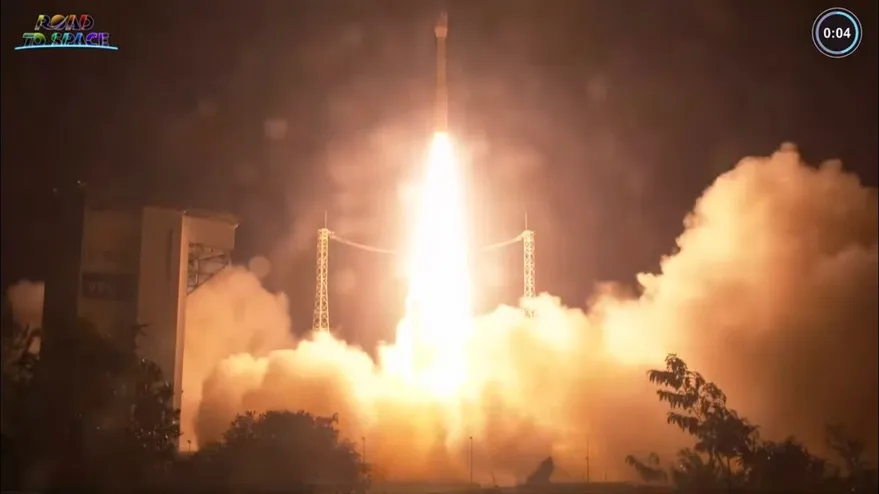European Vega-C rocket launches satellite into orbit
- December 6, 2024
- 0
Europe’s new Vega-C rocket launched from French Guiana on Thursday, placing a satellite into orbit in its first launch since the failed flight two years ago. After a
Europe’s new Vega-C rocket launched from French Guiana on Thursday, placing a satellite into orbit in its first launch since the failed flight two years ago. After a

Europe’s new Vega-C rocket launched from French Guiana on Thursday, placing a satellite into orbit in its first launch since the failed flight two years ago. After a two-day delay, a rocket vital to Europe’s autonomy to reach space took off without a hitch, carrying the Sentinel-1C satellite for the European Union’s Copernicus Earth observation program.
The satellite, which provides data and services to monitor the planet to understand the effects of climate change, was launched into orbit at an altitude of approximately 700 kilometers (435 miles) 1 hour and 43 minutes after launch, to thunderous applause from Jupiter’s control center.
“With Sentinel-1C entering orbit, ESA continues the legacy of Earth-protecting resilient Sentinels and shows why Europe needs safe flights: because what we send into space benefits the Earth, and it all starts with the launch — Josef. It was stated by Aschbacher, Director General of the European Space Agency.
ESA adds that the satellite will provide “high-resolution radar images to monitor Earth’s changing environment” and offer “new capabilities to detect and monitor maritime traffic.” This is the first light rocket launch since December 2022, when it failed to reach orbit on its first commercial flight and lost two satellites, dealing another blow to a continent already struggling to send missions into space.
While the rocket was grounded for two years, the Zefiro 40 rocket engine nozzle that caused the malfunction was redesigned.
Vega-C’s return flight was scheduled for Tuesday from the European Cosmodrome to Kourou, French Guiana. Toni Tolker-Nielsen, ESA’s director of space transport, said the launch was delayed by a day to allow “additional testing of the electrical connections in the upper part” of the rocket. However, a few hours before the launch, it was delayed for another 24 hours.
This time it was “due to a mechanical issue that prevented the Vega-C mobile portal from being lifted,” the French space agency CNES said in a statement on Wednesday.
The gantry is a movable frame that supports the rocket on the launch pad. In its last attempt, Vega-C took off according to schedule at 18:20 local time (21:20 GMT). Earlier on Thursday, ESA’s Proba-3 mission to study the Sun’s outer atmosphere was successfully launched aboard an Indian rocket.
Europe has struggled to find a way to launch missions on its own since Russia withdrew its missiles in 2022 due to the war in Ukraine. A four-year delay on Europe’s new Ariane 6 rocket has compounded the problem, forcing the continent to turn to rivals such as Elon Musk’s SpaceX. But the heavier Ariane 6 delivered a successful first flight in July, bringing some relief to Europe’s space efforts.
The lighter Vega-C is designed to send small satellites into Earth orbit. The last launch of its predecessor, the Vega, was in September, giving added significance to the Vega-C’s return to active service.
Four launches using Vega-C are planned for next year, with five more launches planned to follow in 2026, Tolker-Nielsen said. The Sentinel-1C satellite will use radar to monitor Earth’s environment as part of the EU’s Copernicus program to provide climate and other data to governments and businesses.
Source: Port Altele
As an experienced journalist and author, Mary has been reporting on the latest news and trends for over 5 years. With a passion for uncovering the stories behind the headlines, Mary has earned a reputation as a trusted voice in the world of journalism. Her writing style is insightful, engaging and thought-provoking, as she takes a deep dive into the most pressing issues of our time.